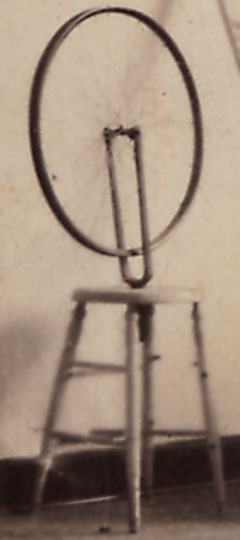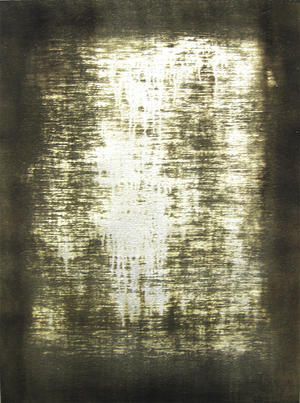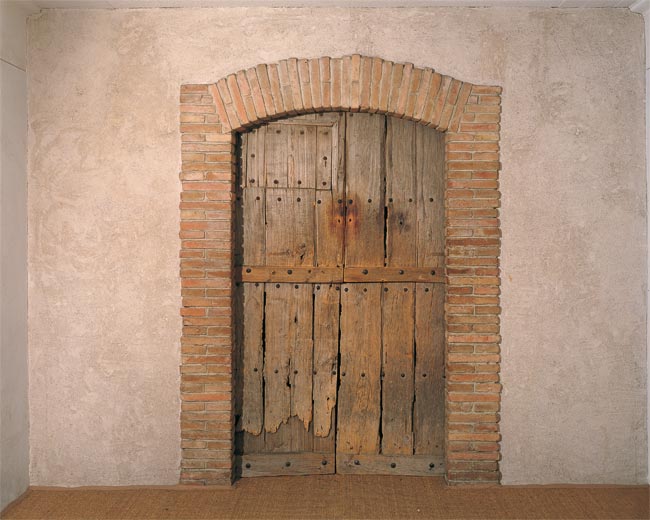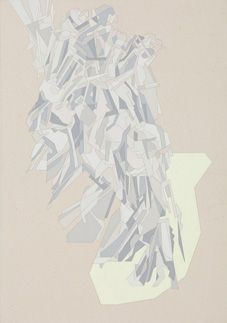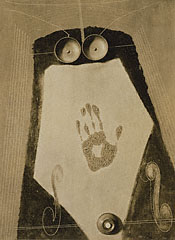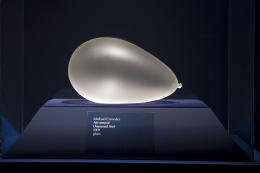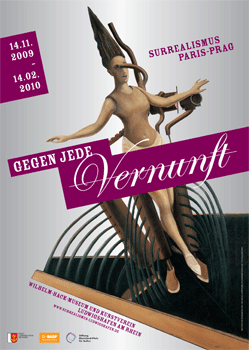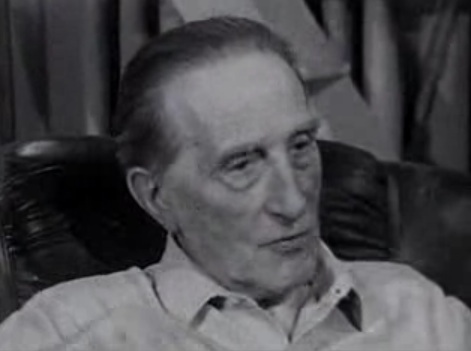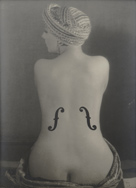Duchampian News & Views
-
Spinning His Wheel(s)
December 4, 2009 While Marcel Duchamp was fond of giving the first versions of his Bicycle Wheel a good turn in his studio, "do not touch" policies ensure that reproductions enshrined in the world's public art collections remain at rest. By 1961, the artist himself had to ask a museum attendant for permission to reposition one of these replicas in order to facilitate a photographic record of the exhibit. (The guard reportedly replied, "Don't you know you're not supposed to move things in the .. read more... -
Invoking the Readymade: New York abstractionists take modern painting by its roots
December 3, 2009 At least one review of "Besides, With, Against, And Yet: Abstraction and The Ready-Made Gesture" (at New York's The Kitchen through January 16) flirts with the Duchampian pun of the exhibit's subtitle as a comment on both the artist's appropriation of mechanically reproduced ("readymade") objects and imagery and the role of received ("readymade") critical vocabularies in the way any work is conceived and appreciated. As the perceptive critic notes, nearly every work of art co.. read more... -
Peepholes and Desire: Two Painters Reflect on Recent Philadelphia Exhibition
December 2, 2009 Painters Matthew Weinstein and Carroll Dunham made a pilgrimage to tour the Philadelphia Museum's anniversary exhibition of source material for Marcel Duchamp’s enigmatic twenty-year project Étant donnés: 1. la chute d'eau / 2. le gaz d' éclairage. Afterward, they played a question-and-answer game of their own, touching on the ambit of desire, the way art focuses the spectator's gaze, and the miraculous appearance of the body as nude in nature. As Carroll Dunham notes, ".. read more... -
Home is where the art is
November 24, 2009Raafat Ishat’s 20-painting series Emergencies, Accidents and Congratulations, part of Brisbane’s upcoming sixth Asia Pacific Triennial of Contemporary Art, is also a journey in art history, with references to modernism, Italian Renaissance architecture, Russian contructivism and cubism — one work is immediately recognisable as a reference to Marcel Duchamp’s famous cubist work Nude Descending A Staircase.
read more... -
Alias Man Ray: Mercurial Jester, Revealing and Concealing
November 23, 2009 "Alias Man Ray" doesn't challenge the long-held view that photography was Man Ray's most enduring contribution to modernism. But it does change our picture of the artist. Duchamp was supposed to be the elusive one, but here it is Man Ray who slips among cities and mediums and personas -- and, finally, out of Duchamp's shadow. "Alias Man Ray: The Art of Reinvention" continues through March 14 at the Jewish Museum (1109 Fifth Avenue at 92nd Street, New York City); (212) 423-.. read more... -
Glass sculptures show modern influences
November 17, 2009 To honor a condition of a Houston Arts Alliance grant artist Michael Crowder received — that he exhibit his recent work by year's end — Crowder and gallerist Wade Wilson had to scramble to squeeze a short-lived exhibit into Wilson's already full roster. But the result, L'heure bleue, looks like anything but a rush job. Crowder's masterful trompe l'oeil glass sculptures like Air amusé (Amused Air), are witty, lovingly crafted homages to such modernist influ.. read more... -
Against all Reason. Surrealism Paris – Prague
November 6, 2009 With over 300 works, this large-scale exhibition takes a fresh look at Surrealism as an international art movement involving major contributions from eastern Central Europe. The organisers, the City of Ludwigshafen and BASF SE, are not only showcasing major works at the Wilhelm-Hack-Museum by Surrealist artists such as Salvador Dalí, René Magritte, Max Ernst, André Masson and Meret Oppenheim, but also numerous works by artists such as Giorgio de Chirico, .. read more... -
Archived BBC Footage of Marcel Duchamp
November 4, 2009 The video below is an excerpt from archived footage of Marcel Duchamp including many of his works and an interview with him in his studio. It was filmed by the British Broadcasting Company for an unknown program. .. read more... -
Alias Man Ray: The Art of Reinvention
November 2, 2009 The constant motif of Man Ray’s life was liberation, change, and transgression: whether in name, medium, style, or content, he sought to free the object or subject of its limitations, just as he sought to free himself from his own personal origins and outsider past. The exhibition will demonstrate how the artist’s assimilation, his emergence from an immigrant world of stereotype, ethnicity, and fixed identity, produced a dynamic polarity of revelation and concealm.. read more...




